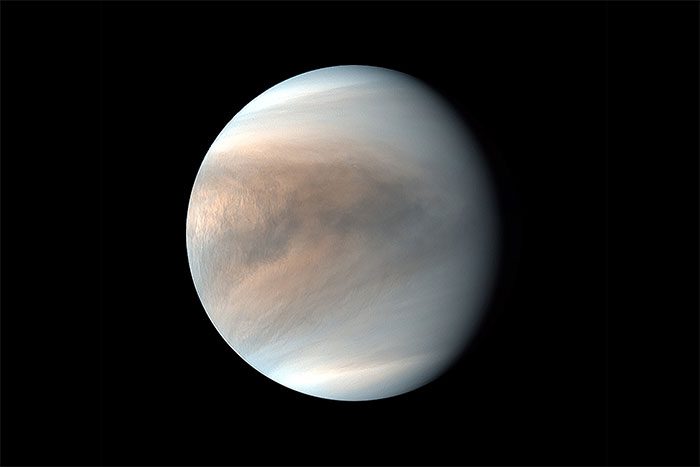Space science has made significant strides over the years, especially in simulating the formation of planets and the ancient history of the solar system, all aimed at understanding how planets in the galaxy are formed and whether they could support extraterrestrial life.
The origins of many planets remain a mystery; for instance, Mercury, as revealed by the latest simulation, has its beginnings closely tied to the early life of Earth and Venus.
Mercury is described with phrases like “a lifeless rock contemplating thoughtlessly under the fierce, blazing light of the Sun”, but unraveling the mysteries surrounding this peculiar planet could bring us closer to understanding our own Earth.
Earth and Venus Contribute to the Formation of Mercury

Mercury is almost an “outlier” among popular models of planets.
Mercury is a unique planet because its orbit is nearly isolated, with no planets orbiting it, and the Sun’s position complicates the accretion process of this planet. Accretion can be understood as the process in which small particles and solid objects leftover from the formation of a star gather to form a new planet.
Science also shows that Mercury’s existence is almost an “outlier” among popular planetary models. Previous astronomical and space science research has emphasized that if a massive planetary embryo formed early in the region closest to the solar gas disk, it would tend to move outward more quickly.
To clarify, the large planetary bodies we see outside the solar system tend to orbit stars that are close to them, but in the case of Mercury, it may have escaped its original position near the Sun. “This movement may have reshaped the surface density of materials and created conditions conducive to the formation of planets similar to Mercury.”
With larger planets than Earth, known as super-Earths or Neptune-like planets, forming in the orbits of stars and then moving outward, they may have also dragged along materials to form planets similar to Mercury. Scientists at the Earth and Planetary Laboratory of the Carnegie Institution and the Laboratoire d’Astrophysique de Bordeaux in France, affiliated with the University of Bordeaux, believe this is the best description of Mercury’s formation, and the heat emitted from Mercury significantly impacts both Earth and Venus. Scientists suggest: “It seems that the precursor nuclei of Earth and Venus formed closer to the Sun, creating the region that formed Mercury as they moved along their new orbits.”
Sun-like stars with planets such as Mercury could harbor life around them.
According to reliable simulations of the initial formation of the solar system, Earth and Venus would carry along “Enstatite Chondrite-like materials” on their orbital journey from the inner regions of the solar system to their current positions. These simulations also predict that the composition of Venus would be very similar to that of Earth, formed from a large assemblage of dry materials.
Notably, as Earth and Venus move away from their proximity to the Sun, they typically leave behind less material for similar planets to be formed in Mercury’s orbit. The scientists’ simulations of the formation of smaller planets also provide an opportunity to explain the formation of Mercury. If there are Earth-like stars in the galaxy with planets orbiting them, it is very likely that they were also formed when an Earth-like planet moved there, and if fortunate, it could indeed host genuine extraterrestrial life.





















































